The Holy Grail of Retail & the Next Wave of Monetization on the Web
By True Ventures, September 14, 2010
This is a thought piece by the Founder & CEO of Milo.com, a True Ventures portfolio company. Milo’s mission is to bring every product on every shelf of every store in the physical world onto the Internet. The company has national real-time inventory data from many of the country’s top retailers, indexing products from over 50,000 local stores.
There are two ways to make money at scale on the Internet: 1) sell something or 2) help someone else sell something. The first wave of giant web companies did this in the e-commerce market.
1. Sell something
– Amazon ($63B) – sell products online.
2. Help someone else sell something
– eBay/PayPal ($32B) – help people buy/sell used products.
– Google ($152B) – use commerce searches to drive e-commerce sales.
– Yahoo ($18B) – use commerce searches to drive e-commerce sales.
Given the size of these companies most people are surprised to learn that the market that drives their monetization, e-commerce, in 2010 will only represent 5% of retail sales in the United States this year.
Local: the other 95% of retail sales
If e-commerce produced the impressive ecosystem of companies above, imagine what bridging the online and offline commerce worlds can create.
With consumers increasingly turning to the Internet to inform offline purchasing decisions the opportunity is massive. While these purchases do not occur online, the decision of what and where to buy is made there. This year third parties estimate research online buy offline could represent over 46% of retail sales or 9X e-commerce sales in the US.
Inventory and the “Where” Question
Online to offline commerce can roughly be broken down into products and services. On the service side the inventory is clear. A massage parlor offers massages and they are always in-stock as long as an appointment can be made. For products, finding where is a much more complicated question. Retailers sometimes carry tens to hundreds of thousands of unique products each with distinct UPCs, images, descriptions, specification and customer reviews which vary vastly by location. So the key to answering the consumers “What” to buy and “Where” to buy it question in the product realm is real-time store inventory.
Pre-measurement: the early days (2009-2012)
With no way to track when a consumer researches a product or service online and buys offline it was very difficult for web companies in local to quantify their value and generate substantial revenue. To get around this issue companies like Groupon have sprouted up to find clever ways of forcing the user to transact online by offering steep expiring discounts on great local services. This model works particularly well for high margin service businesses with expiring inventory but poorly for other local product/service segments.
Post-measurement: when things get interested (2011-2020)
At some point over the next year companies like Milo and Google will bring to market a technology which enables online to offline conversion tracking at scale. This is an important step in monetization for the Internet and will finally enable web companies to quantify the ROI they can drive to local merchants. But how? Isn’t that impossible? Not only is it possible it can be done without a change in consumer behavior in a way that it frictionless for both merchants and their customers.
Stay tuned.
This post was written by Jack Abraham, CEO & Founder of Milo, a True Ventures Portfolio Company.

